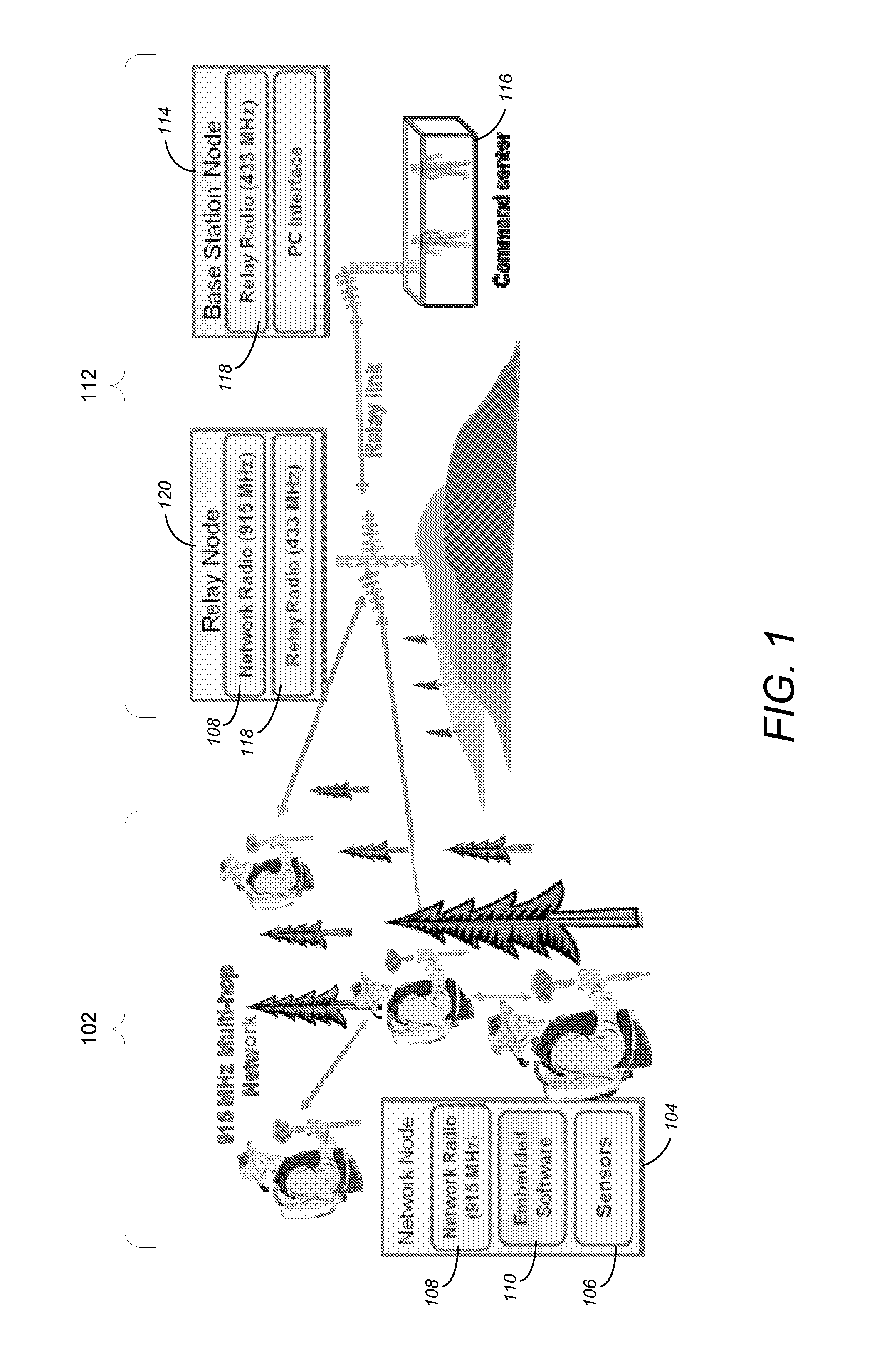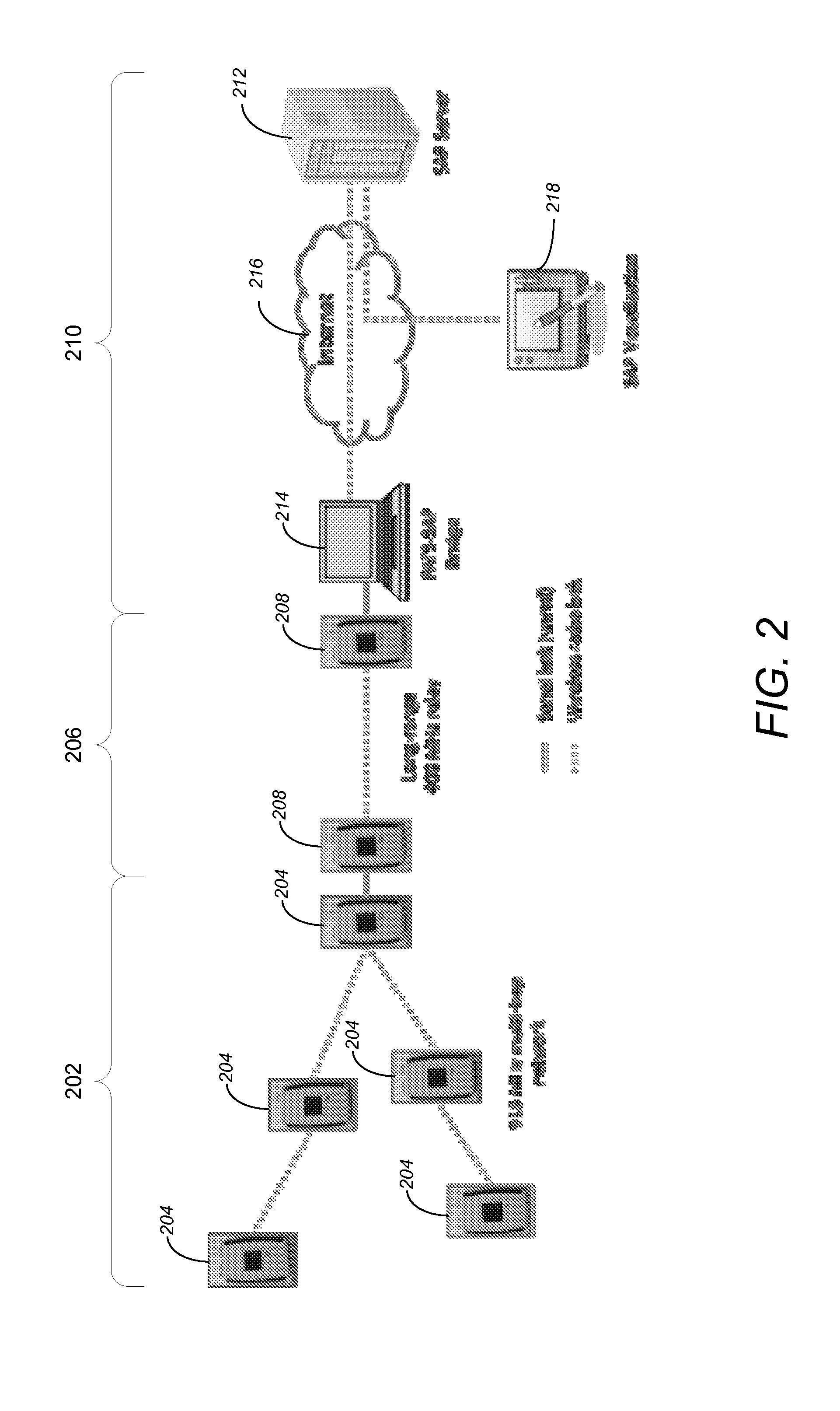Wireless sensor node for autonomous monitoring and alerts in remote environments
a sensor node and remote environment technology, applied in the field of tracking people/nodes, can solve the problems of not supporting the capability for data handling or monitoring the movement and status of firefighters on the radios used by firefighters
- Summary
- Abstract
- Description
- Claims
- Application Information
AI Technical Summary
Benefits of technology
Problems solved by technology
Method used
Image
Examples
Embodiment Construction
[0033]In the following description, reference is made to the accompanying drawings which form a part hereof, and which is shown, by way of illustration, several embodiments of the present invention. It is understood that other embodiments may be utilized and structural changes may be made without departing from the scope of the present invention.
OVERVIEW
[0034]A Personal Alert and Tracking System (PATS) consists of a networked collection of custom-designed low-power wireless nodes that provide tracking of the position of the nodes. A PATS node is capable of transmitting sensor information and receiving visual / audible alerts and warnings over an extended rugged area. The nodes are equipped with onboard GPS (global positioning system), temperature, and accelerometer sensors with the ability to interface additional sensors as needed to each node. Mobile nodes form arbitrary network topologies and use a multi-hop packet routing protocol to relay sensor data to the command center. The mul...
PUM
 Login to View More
Login to View More Abstract
Description
Claims
Application Information
 Login to View More
Login to View More - R&D
- Intellectual Property
- Life Sciences
- Materials
- Tech Scout
- Unparalleled Data Quality
- Higher Quality Content
- 60% Fewer Hallucinations
Browse by: Latest US Patents, China's latest patents, Technical Efficacy Thesaurus, Application Domain, Technology Topic, Popular Technical Reports.
© 2025 PatSnap. All rights reserved.Legal|Privacy policy|Modern Slavery Act Transparency Statement|Sitemap|About US| Contact US: help@patsnap.com



